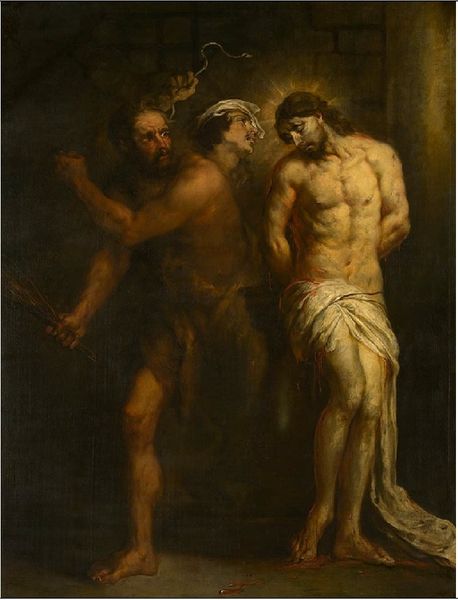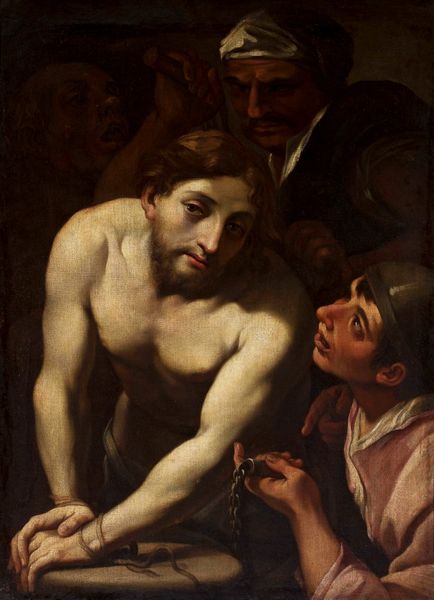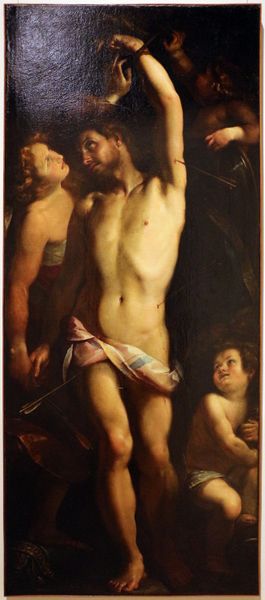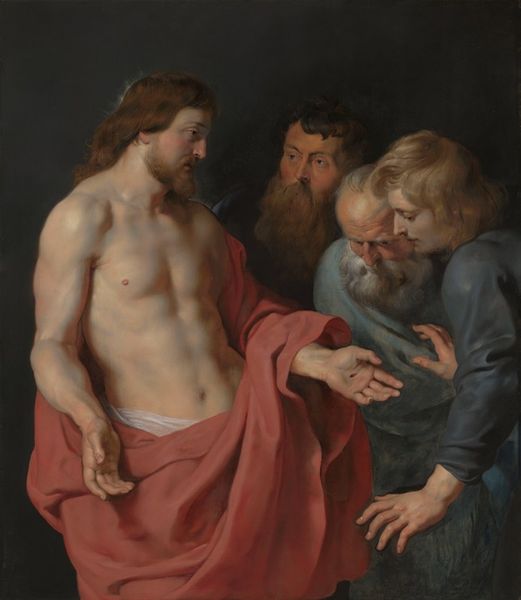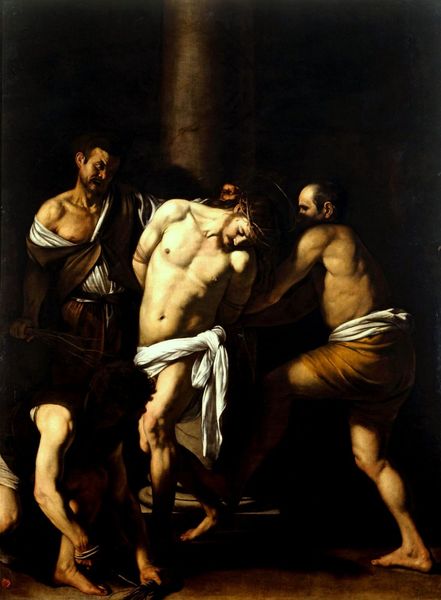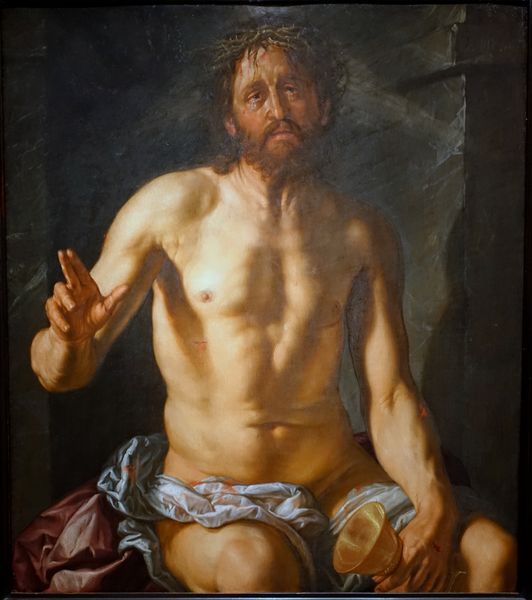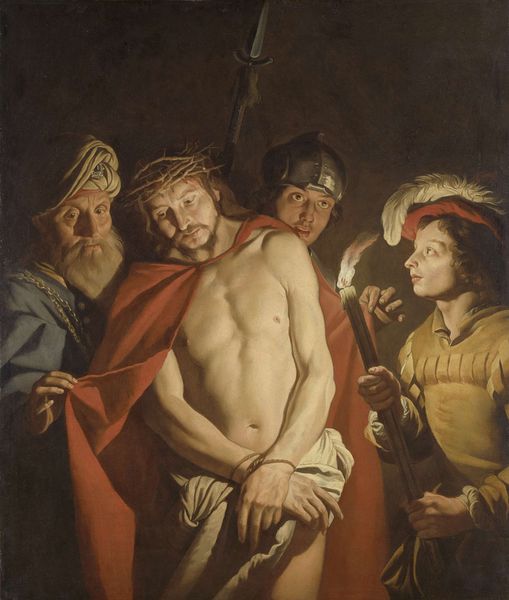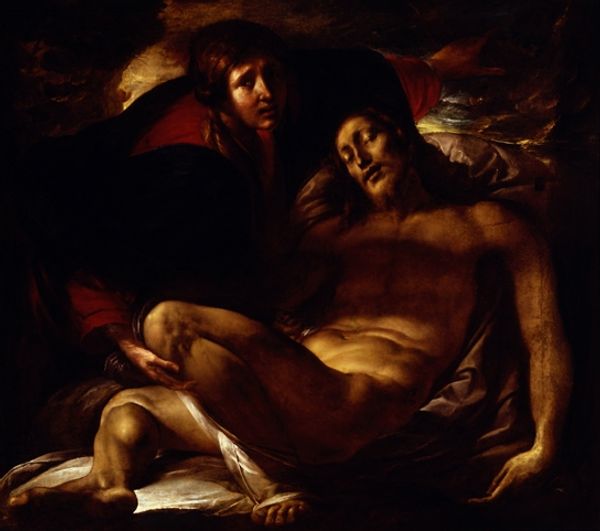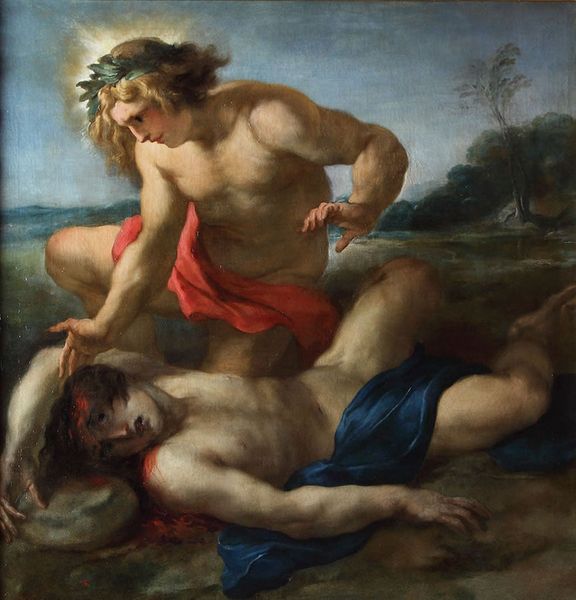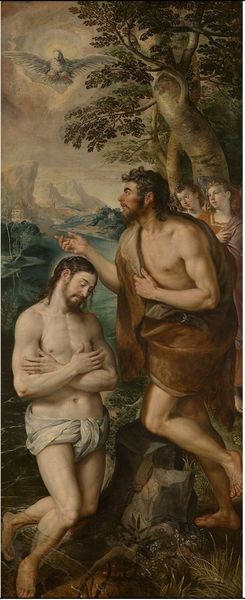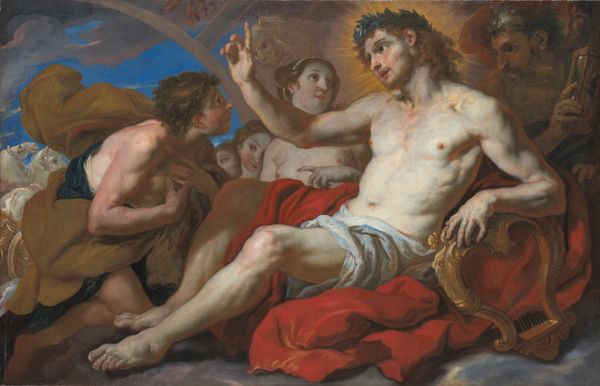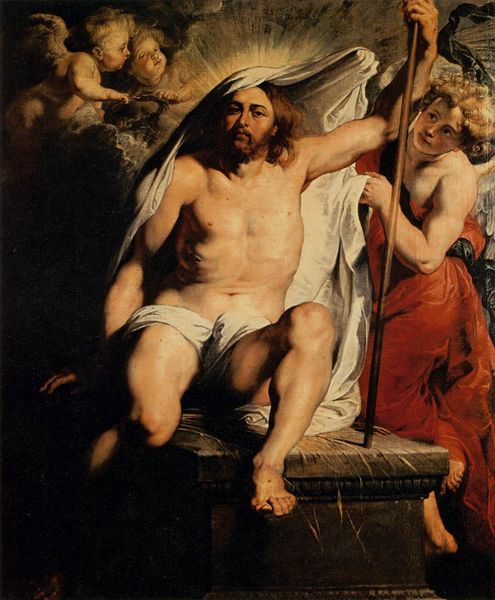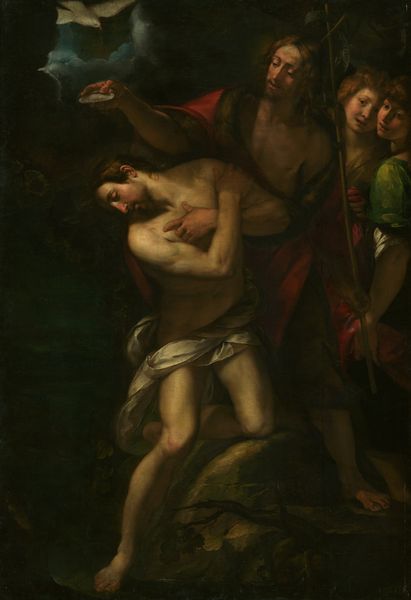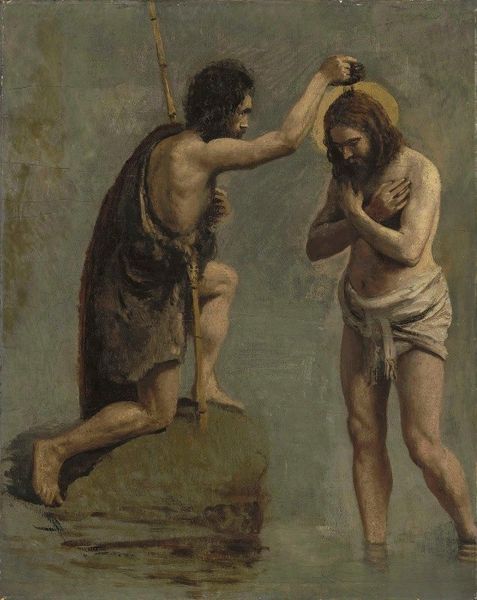
painting, oil-paint
#
portrait
#
painting
#
oil-paint
#
mannerism
#
figuration
#
oil painting
#
human
#
history-painting
#
portrait art
Dimensions: 203.5 x 132.5 cm
Copyright: Public domain
Curator: Looking at "The Baptism of Christ," executed in oil on canvas by Hendrick Goltzius in 1608, what strikes you immediately? Editor: The drama! It's theatrical. The figures are intensely lit, highlighting their musculature, and that dove seems almost surgically inserted from another composition, adding a bizarre, slightly unsettling dynamism. Curator: It's definitely a Mannerist piece. You see that in the exaggerated poses and the emotional intensity. Goltzius, known for his engravings, translated that graphic precision to oil paint. I find myself considering his access to materials and workshop assistants and the patronage system supporting such detailed work. Think of the cost of pigments and the time involved! Editor: And think about how those visual strategies create meaning. Notice the diagonal composition leading your eye up from the reddish cloth, grounding the bottom right and toward the apex in that oddly rendered heavenly source above—a textbook Baroque technique to stir emotion! Curator: Right, and let's consider how the subject matter impacts Goltzius' artistic decisions. Religious paintings at this time were commodities. The production depended heavily on fulfilling contracts to reflect patron tastes or satisfy religious agendas during the Counter-Reformation. Editor: But see how he deviates. Look at Christ's gaze directed at the viewer, an invitation to contemplate the moment of baptism and salvation, versus the rather intense downward gaze of John. Also, there is that oddly glowing light above. The texture and tonality there is quite brilliant, directing our reading and suggesting divine transcendence. Curator: Indeed, though it must be seen through its contemporary market and labor systems. An artist’s innovation or subversion had limits; Goltzius was producing for a particular audience, and he must negotiate his style within set economic constraints to express themes of sin and rebirth. Editor: Perhaps, but this formal approach allows us to really appreciate the compositional elements that evoke such emotion. I leave here struck by how the forms contribute to an engaging artistic work, full of visual intrigue. Curator: And to better appreciate the artist and the era, one should consider the intricate web of production that defined the art and, moreover, defined the role of the artist and artisan within society. That offers me food for thought as well.
Comments
No comments
Be the first to comment and join the conversation on the ultimate creative platform.
